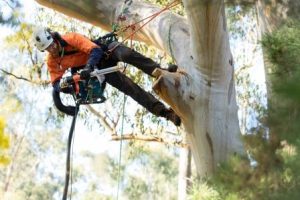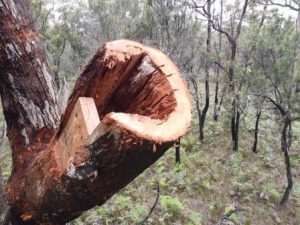Types of introduced wildlife hollows

There are a range of methods for introducing a “wildlife cavity” or “wildlife hollow” into a tree or log. There is no right or wrong way to create an introduced hollow however there are some key considerations.
Wildlife hollows can be fully created where the tree is not of a mature enough age to have developed hollows yet. Or an existing small hollow, wound or other tree damage may be able to be accelerated or expanded to create a hollow of a size to suit a home for our native wildlife.

Acceleration of hollow formation has been explored around the world with tools such as fire and water. Some methods are faster (e.g. explosives) or slower (e.g. fungal inoculation) and Treetec continue to experiment with a range of techniques. Our information relates to the introduction of completed usable hollows for a range native Australian wildlife species.
Many types of tools can be used, particularly hole boring and wood cutting tools attached to grinders. Currently in the industry there are three primary methods being used for mechanically introduced hollows in trees:
- Tec-Door Hollow / Narrow Door Hollow
- Hollowhog Hollow and Tec-Spout modification
- Faceplate Wildlife Hollow
- Natural Hollow Modification
Our team of arborists and ecologists can assist on any canopy access project. We are able to install a single nest / log wildlife box or introduce a new single chainsaw wildlife cavity right through to the design and implementation of a full site habitat restoration program.
Treetec can assist with the design of your project to restore habitat by implementing a desktop review of the site, analysis of vegetation classes and local indigenous fauna to an on-site analysis and selection of suitable trees and installation locations.
We can develop a long term ecological plan of vegetation management and wildlife habitat, delivering the best outcomes for your individual site. We incorporate a variety of introduced hollow and nest/log box techniques, depending on which will provide the best results for your unique site.
Treetec are specialists in canopy access services for arboreal (tree dwelling) wildlife. Contact us for more information or to find out how we can assist you on your project.
Here are some stories showcasing Treetec projects highlighting our introduced wildlife hollows:
